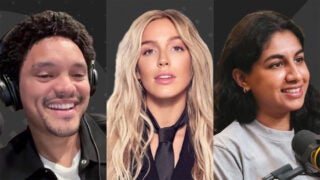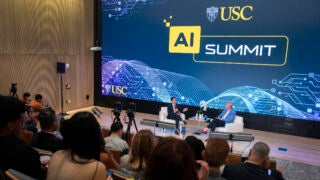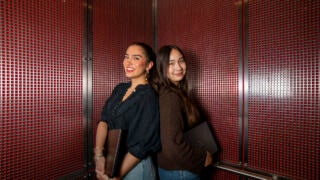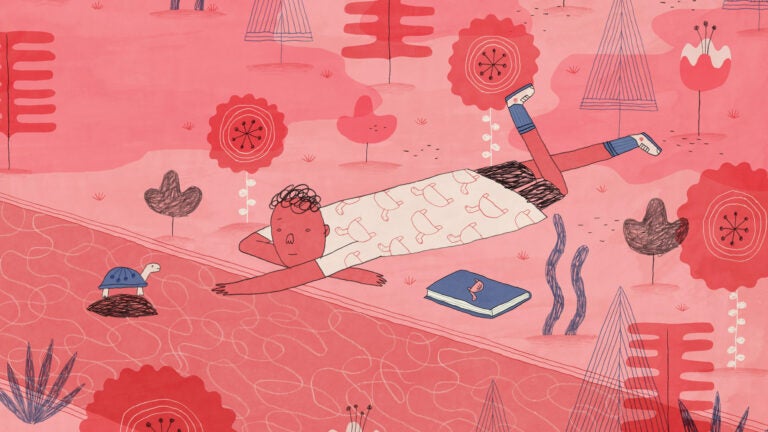
(Illustration/Brian Rea)
The Childhood Moments That Launched Their Careers as Explorers
USC researchers remember times of wonder and questioning that sparked their lifelong passion.
Innocent curiosity can turn discovery into life’s purpose. A toddler locks eyes with a turtle for the first time; a mischievous teen concocts stink bombs in the garage. However their careers develop, future researchers often get their start as inquisitive kids. An unexpected brush with the weird, wild, worrying or wonderful just might end up inspiring decades of exploration.
Read on as USC researchers share how early moments of discovery filled them with fascination and a thirst to learn.
A USC Researcher Finds Starry-Eyed Inspiration
Vera Gluscevic is a professor of physics and astronomy at the USC Dornsife College of Letters, Arts and Sciences who studies dark matter, dark energy and other mysteries of the universe. She describes, in her own words, how a low-budget sci-fi flick during her childhood in Belgrade, Serbia, set her sights on the galaxies above.
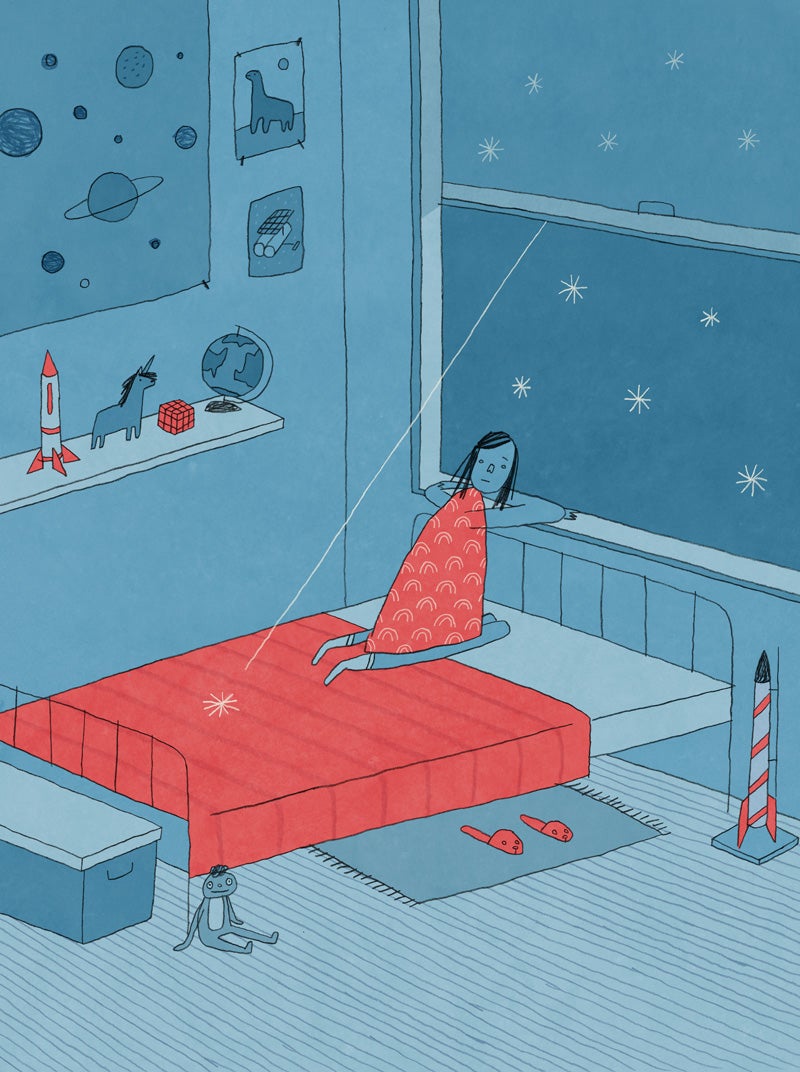
We live in a society that’s not always aware of how important role models are and how you can project yourself onto what you see happening in the world. In my case, when I look back at how it all began, it becomes quite obvious.
I was a curious kid and a good student. I had a lot of different interests like writing and paleontology and so on. Then I saw a movie in which the main character was a woman astrophysicist. She was super smart, super beautiful and a problem solver. She saved Earth from an asteroid impact. For years, I’ve been trying to find this movie, but all I can remember is her face and how much her science empowered her to be who she wanted to be.
Silly things like that really imprint on us when we’re young. That movie defined the notion of an astrophysicist in my mind. At some point I realized, hey, I am good at math and physics. I’m going to be like her.
Thinking back on that experience is great because it lets me zoom out from the daily tasks of my profession and think, wow, I got here. I’m doing exactly what I dreamed of doing since I was a kid. I also realize I’m a woman in a field that has very little diversity, unfortunately. But I know there are girls out there now for whom my image may actually represent what scientists look like. That makes me really happy.
Testing the Waters Leads to a Passion for Ocean Science
When ocean researcher Jill Sohm PhD ’07 isn’t mentoring students at USC Dornsife, she studies the microscopic marine creatures that create and sustain life out of human sight.
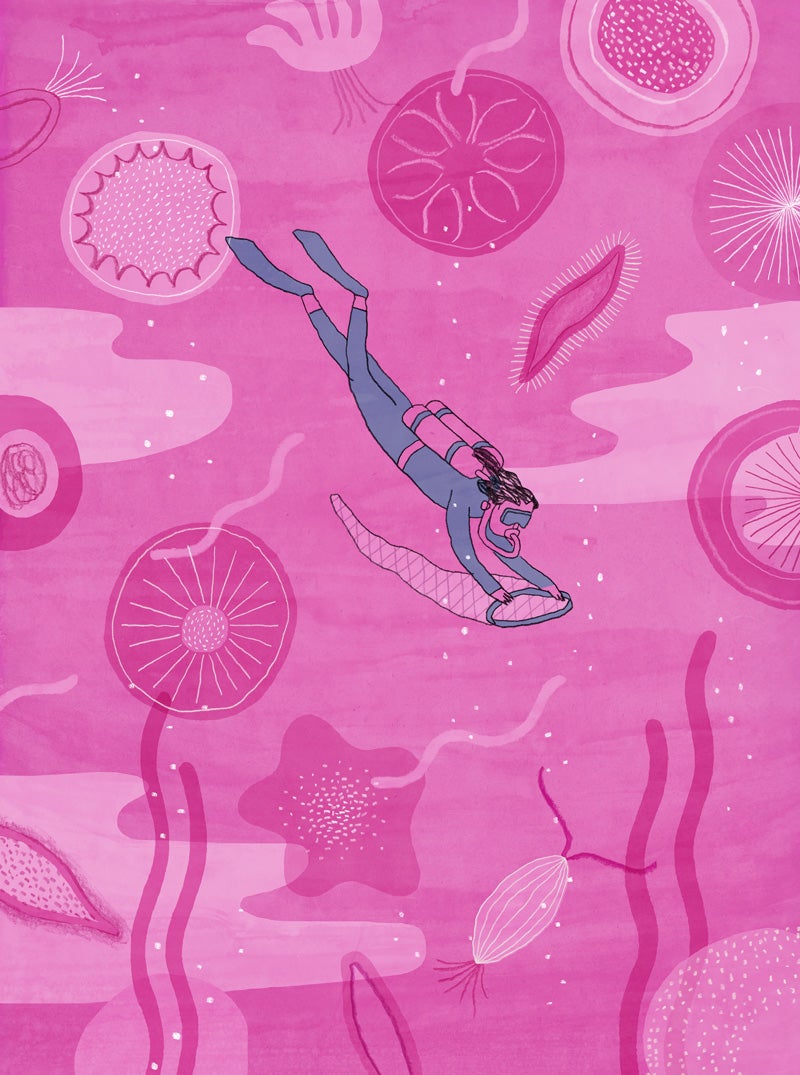
Something about a boat trip on the San Francisco Bay for her high school AP biology class spoke to Jill Sohm. The 10th-grader grew up in a not particularly outdoorsy family. But she felt right at home collecting water samples and peering at the plankton and other ocean organisms that appeared under her microscope.
The teens gathered seawater with bottles used by professional researchers for testing and learned to take mud samples. “I can’t explain it,” she says, “but there was something about the idea that this could be a job that really struck a chord with me.”
As the Santa Rosa, California, native pursued a biology degree in college, her intensive field and lab research with top scientists unlocked a hidden world of tiny microbes that continues to fascinate her.
“These very small things that you can’t see can have such a big impact and really drive many things that happen on our planet,” Sohm says. “It’s a mystery, it’s not obvious, it’s not something you can see with your eyes. It’s this whole world that we have to use special techniques to understand.”
The Lizard King: USC Researcher is Riveted by Reptiles
Certain reptiles and amphibians can regrow damaged tails or limbs. That makes them terrific research subjects for Thomas Lozito, assistant professor of orthopaedic surgery and stem cell biology and regenerative medicine at the Keck School of Medicine of USC. The creatures’ knack for regeneration could spawn discoveries that lead to treatments for arthritis and spinal cord injuries.
As soon as 3-year-old Thomas Lozito laid eyes on the box turtle, everything changed.
“It was love at first sight,” he says. “I was obsessed.”
His dad, a real estate agent, discovered the turtle in a house he was selling. Lozito couldn’t get enough of it. He adopted other rescue turtles, and the turtles laid eggs. Soon, the reptiles overran the backyard.
On father-son fishing trips, he quickly lost patience with the fish and wandered off to find frogs, lizards, snakes and other crawly creatures to study. Before long, the wildlife in New Jersey seemed too ordinary, and he talked his parents into a trip to Costa Rica.
They became like my trading cards, my Pokémon.
Thomas Lozito
“That’s when I became fascinated with poison dart frogs,” he says. “They became like my trading cards, my Pokémon. My goal was to keep and breed every species.”
Lozito transformed the family den into a jungle habitat, much to his mother’s dismay. “It looked like a commercial frog-rearing facility,” he says. All the same, he never expected his herpetological fixation would one day grow into a career.
But now the USC researcher spends his days examining how lizards and salamanders regrow missing limbs and tails. And he inspires a new generation of students with his passion for scaly and slimy critters.
“Even the ones who are initially afraid of lizards adapt really quickly,” he says. “Many end up with their own pet lizards.”
Lozito also maintains a personal collection, although it’s much smaller than during his childhood heyday. Among the two dozen animals at home is his favorite, a giant monkey frog he got in high school. Now nearly 30 years old, the frog goes by a name from fantasy: Gollum.
An Instant Reaction Draws USC Researcher into Chemistry
As a professor of chemistry at USC Dornsife, Valery Fokin PhD ’98 studies how pharmaceuticals work to find better ways to diagnose and treat human diseases. But as a kid, he experimented for the fun of it.
Valery Fokin expected to shove his 7th-grade chemistry textbook on a shelf and maybe refer to it occasionally. But when he finally cracked it open and read a few pages, he couldn’t stop. He skipped school for several days to devour the entire volume.
“It was easy, it was natural,” he says. “It just made sense to me.”
Growing up in the twilight years of the Soviet Union in the Russian city of Gorky (now Nizhny Novgorod) had its benefits. When Fokin grew bored in chemistry lectures and started bugging classmates, his exasperated teacher sent him to tinker in the lab at the back of the classroom. Thanks to lax safety regulations, it was well stocked with assorted substances.
Sometimes the smell would hit them well before they got into the house.
Valery Fokin
“Some of the chemicals migrated home with me,” he says. “My parents were very understanding and tolerant. Later, they told me they were never quite sure what to expect when they got home. Sometimes the smell would hit them well before they got into the house.”
Fokin concocted only mildly dangerous potions — a little rotten-egg-scented hydrogen sulfide here, a little white phosphorous to toss from the third-story apartment window in a glowing shower of sparks there. The most damage he caused was a burn mark on the carpet that his mom discovered some months later. He also caught flak for setting her expensive perfumes ablaze to see how the flames changed color with various additives.
“The kitchen retained the smell of different French perfumes for a while, so it was difficult to hide,” he says. “That was quickly discouraged.”
The USC researcher’s spirit of experimentation lives on today at the USC Michelson Center for Convergent Bioscience, which is also home to biomedical engineers, neuroscientists, biologists and other specialists. It’s a space for exploration and collaboration — and Fokin knows better than most that when you mix various elements, something special might happen.
Early Lessons Inspire a Life in Full Color
Neuropsychologist April Thames studies links between racial discrimination and chronic disease as an associate professor of psychology at USC Dornsife. The USC researcher shares her own story of how seeing discrimination firsthand as a child in South Los Angeles shaped her future.
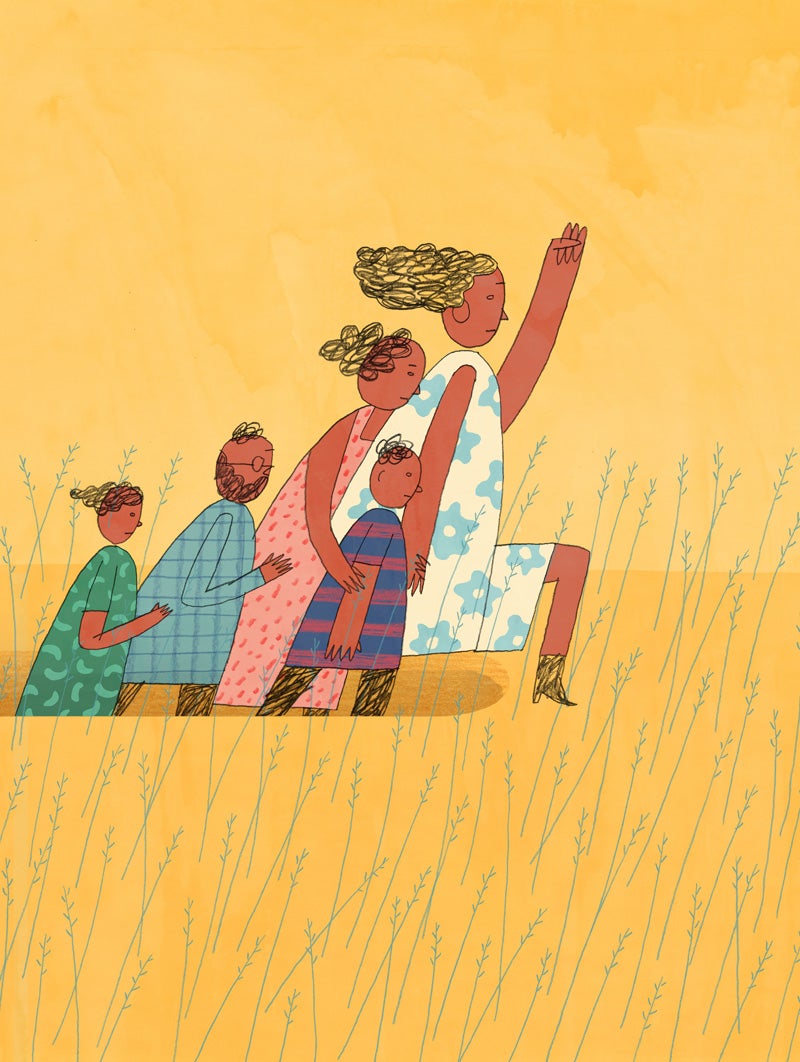
I’m biracial — I’m half African American and half white. Growing up, I would see a lot of acts of racism. Being an interracial couple at that time, my mom and dad experienced a lot of discrimination. I knew from a very early age that Blacks were treated much differently than whites. I would hear these rants against Black people because they didn’t know I was Black — I would hear what people were really thinking.
It’s hard to look back, but I remember feeling that I was being treated differently but not really understanding why. If my dad brought me to school, I got different looks and teachers would react in different ways than if my mom dropped me off.
I would always raise my hand to give answers, and one teacher just would not call on me. I’d tell my mom, “I don’t think Miss So-and-So likes me.” I remember another teacher who slammed her fist down on my desk and said, “Pay attention!” I was scared — I was probably 5 or 6 at the time. My mom and dad were so angry and went down to the school. I don’t know what happened after that, but I did experience differential treatment. And I wasn’t the only kid of color who had those experiences. I saw it happen to my peers.
That’s what got me interested in this idea that things you can’t change about yourself — things that are part of your core identity — can also be social threats.
April Thames
My parents also definitely faced judgment and lost certain friends because of their interracial dynamic. When my mom would become friends with other mothers at the school, they didn’t know my father was Black. When they found out, my mom told me later they would no longer associate with her and didn’t want their kids playing with me. I didn’t know any of this was going on when I was younger. I just knew one day I had a friend and the next day I didn’t.
That’s what got me interested in this idea that things you can’t change about yourself — things that are part of your core identity — can also be social threats. It does result in this chronic underlying stress.
In childhood, I wasn’t necessarily interested in human behavior. It wasn’t until I went to junior college and discovered psychology that I really became fascinated by how people’s behavior can change depending on their environment. But even when I got into research, I hadn’t thought about discrimination as a chronic stressor.
My dad obviously had this stress as a Black man. My mom would worry about how people would treat me because I was half Black and how they would treat her when they saw she was with my dad. Those stressors were there.
If you talk to any researcher, especially those who study social justice issues, there’s usually some kind of personal connection to the work — you need that passion for what you’re doing. For me, it has been fascinating to connect discrimination to health outcomes. In terms of the science, it’s about showing how these experiences are real and affect people. I think we are finally starting to have these conversations now and recognizing this does have an impact.

